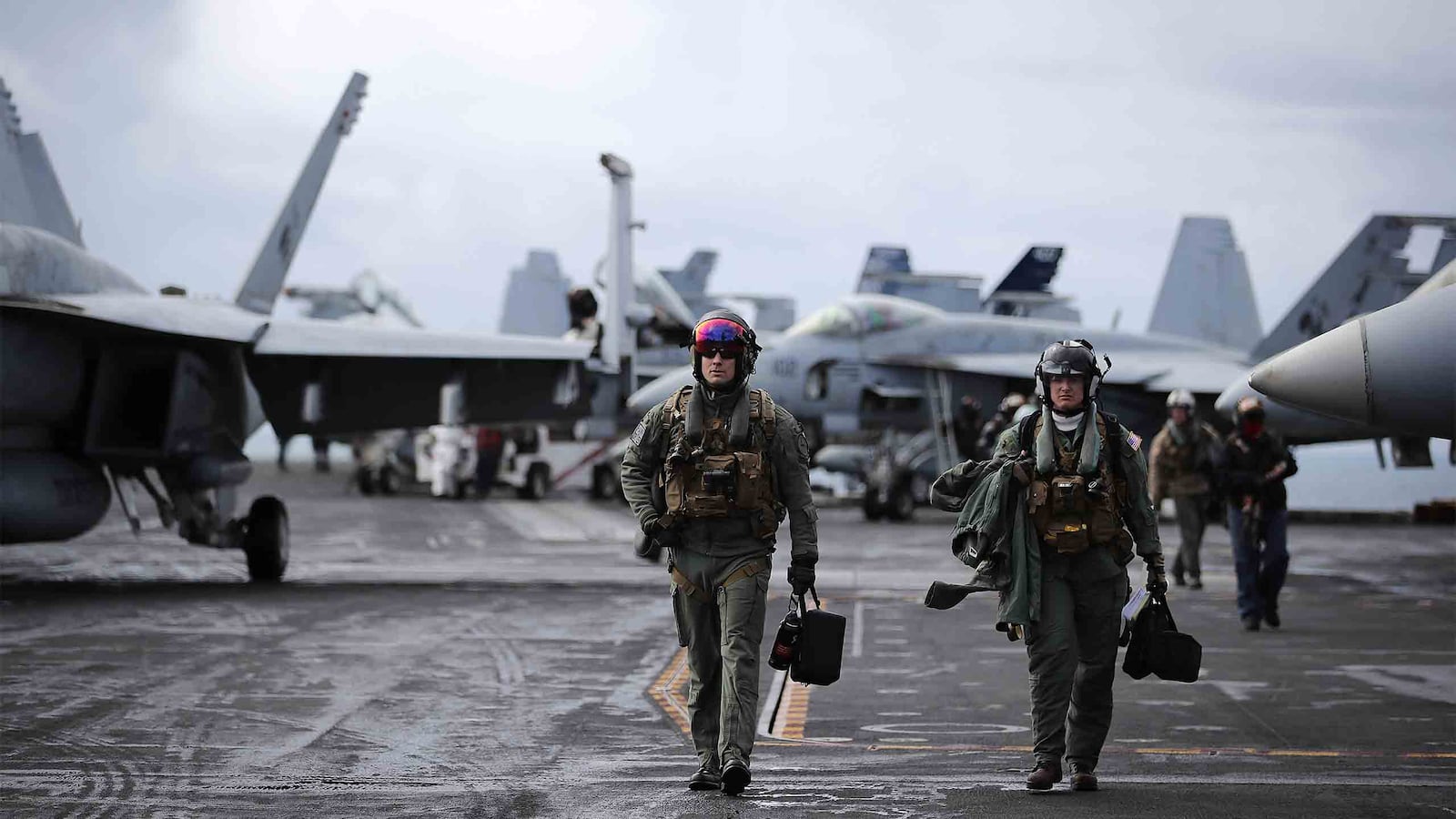The U.S. Navy has deployed special, radar-hunting warplanes to South Korea to train for a possible air war against North Korea.
The five EA-18G Growlers have joined more than 200 American and South Korean planes and tens of thousands of military personnel for a five-day annual war game known as Vigilant Ace.
The two-person crews of the twin-engine EA-18Gs are responsible for arguably the most dangerous mission in all of aerial warfare. Officially called “suppression of enemy air defenses,” the mission involves clearing a path through sophisticated air defenses so that other planes can safely strike their targets.
The EA-18Gs carry sensors for detecting radars’ emissions, jammers for interfering with the sensors’ functions, and radar-homing missiles to destroy them. But to take out enemy air defenses, the Growler crews have to get close—and that puts them directly in harm’s way. In North Korea, the crews would face a growing arsenal of radars and surface-to-air missiles based on deadly Russian and Chinese designs.
The Boeing-made Growlers arrived during the first week of December at Osan air base, around 50 miles from the border with North Korea. The EA-18Gs, from squadron VAQ-134 based in Washington State, were in the middle of a six-month training rotation with two squadrons of U.S. Air Force F-16s flying from an air base in Japan.
Eighteen of the F-16s, whose crews also train to destroy enemy air defenses, accompanied the EA-18Gs to South Korea for the Vigilant Ace war game. “This exercise will help identify shortfalls our fighter squadron would endure if we had to relocate to [South Korea] during a real-world scenario,” said 1st Lt. Michael Mayclin, a Japan-based F-16 pilot.
The Vigilant Ace exercise is notable for the large number of radar-evading stealth warplanes that are taking part. Six Air Force F-22s, six Air Force F-35As and 12 Marine Corps F-35Bs are in South Korea for the training.
Owing to their unique shaping and special, radar-absorbing skin coatings, stealth warplanes are harder for radars to detect than conventional warplanes are. But despite President Donald Trump’s claims to the contrary, F-22s and F-35s aren’t “invisible” to radars or other sensors. “History has proven even the most stealthy of aircraft needs [jamming] support,” a Navy electronic warfare officer told the website Foxtrot Alpha in 2015.
“The air-defense detection systems currently marketed by Russian producers represent a serious potential challenge to Western air power in many parts of the world in the future,” Igor Sutyagin, a fellow at the Royal United Services Institute in the United Kingdom, warned in a 2014 paper entitled “The Limits of Stealth.”
As early as 1985, the CIA warned that Soviet-made air-defense systems, including the then-new Flap Lid radar, “could threaten low-signature and stealth vehicles.” Not coincidentally, North Korea uses an upgraded version of the Flap Lip with its new KN-06 surface-to-air missile system, which the country’s leader Kim Jong Un declared operation in May.
The KN-06 boasts some surprisingly modern features for a country whose armed forces still mostly use weapons from the 1960s. “Many suspect the technology was secretly supplied to North Korea by either China or Russia,” the Washington, D.C.-based Center for Strategic and International Studies concluded.
CSIS estimated that Pyongyang could already possess more than 100 KN-06 launchers.
A possible technology pipeline between Russia and China and North Korea’s air-defense system poses an enormous challenge to American air power—especially the Navy EA-18G crews. “Things are going to change much quicker, and in far greater complexity,” the electronic-warfare officer told Foxtrot Alpha.
“The threat here on the peninsula is very real,” said Col. William Betts, commander of an Air Force fighter wing in South Korea. “Countering that threat needs to be in the forefront of our minds.”






